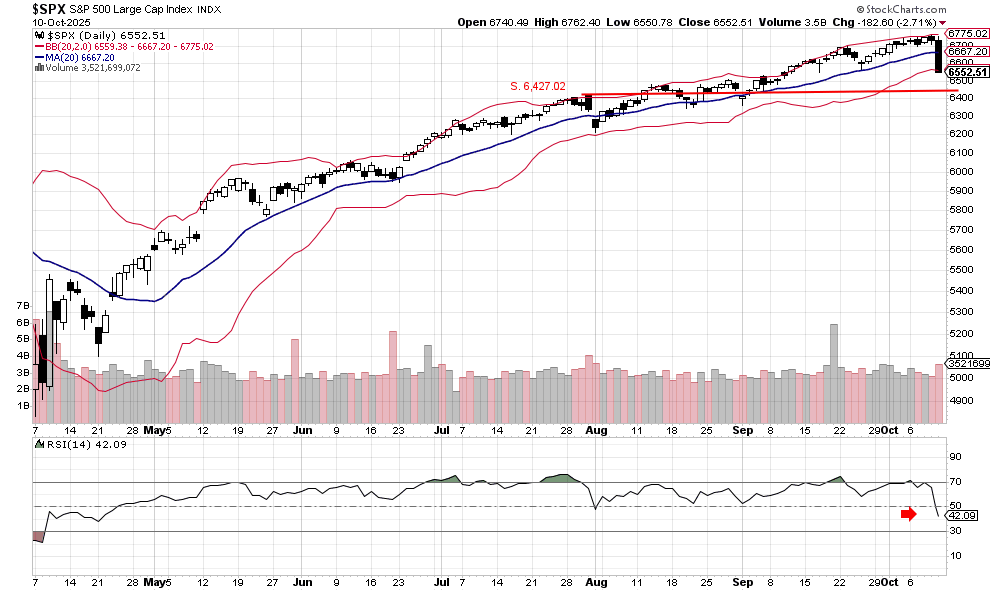Morning Brief

Headline News:
Equity futures point to a higher open this morning after President Trump eased trade-related concerns with China, posting on Truth Social on Sunday, “Don’t worry about China, it will all be fine!”
The post follows a separate message from Friday, when the president said China was being “very hostile” and warned of a “massive increase” in tariffs on Chinese goods, sending the stock market sharply lower. The ensuing retreat marked the worst day for the S&P 500 since the sweeping tariff announcements of early April, with tech names being hit particularly hard.
Treasury Secretary Scott Bessent added to the optimistic sentiment this morning, saying in a Fox Business interview that the U.S. and China communicated over the weekend, and he still expects President Trump to meet with Chinese President Xi soon.
In other global news, The New York Times reports that Hamas has released all living Israeli hostages as part of a Gaza ceasefire brokered by the United States, with President Trump stating that the war “is over” in the region.
In Washington, the government is not any closer to passing a funding resolution to end the ongoing government shutdown, with The New York Times reporting that President Trump’s decision to fire government workers has deepened the divide between the two parties.
There is no economic data of note scheduled for today. Earnings reports will ramp up tomorrow, with major banking names and several large players from the health care sector set to report this week.
The bond market is closed today for the Columbus Day holiday.
(Michael Gibbs, Managing Director, Lead Portfolio Manager )
Markets:
The S&P 500 suffered a sharp sell-off on Friday, declining 2.71% to close at 6,552.51. The index broke below its 20-day moving average and finished beneath the lower Bollinger Band, signaling a decisive shift in momentum. The RSI also fell sharply, closing at 42.09, confirming strong downside pressure.
This heavy selling inflicted significant technical damage on the S&P 500 and increases the likelihood of further weakness as markets enter earnings season. The next potential support level is near 6,427.0.
However, sentiment showed a modest rebound early Monday, with S&P 500 futures up 1.12% after President Trump toughened his stance on new tariffs for China, suggesting a potentially volatile start to the week.
We are currently Intermediate-term cautious and short-term bullish.

John N. Lilly III CPFA
Accredited Portfolio Management Advisor℠
Accredited Asset Management Specialist℠
Portfolio Manager, RJFS
Partner, DJWMG
Windsor Wealth Planners & Strategists
Futures trading is speculative, leveraged, and involves substantial risks. Investing always involves risk, including the loss of principal, and futures trading could present additional risk based on underlying commodities investments.
The Relative Strength Index (RSI), developed by J. Welles Wilder, is a momentum oscillator that measures the speed and changes of price movements.
The percentage of stocks trading above a specific moving average is a breadth indicator that measures internal strength or weakness in the underlying index. The 50-day moving averages are used for short-to-medium-term timeframes, while the 150-day and 200-day moving averages are used for medium-to-long-term ones. Signals can be derived from overbought/oversold levels, crosses above/below 50%, and bullish/bearish divergences.
The Dow Jones Industrial Average (DJIA), commonly known as “The Dow,” is an index representing 30 stocks of companies maintained and reviewed by the editors of the Wall Street Journal. The Russell 2000 Index measures the performance of the 2,000 smallest companies in the Russell 3000 Index, which represents approximately 8% of the total market capitalization of the Russell 3000 Index.
The S&P 500 is an unmanaged index of 500 widely held stocks that is generally considered representative of the U.S. stock market. Past performance may not be indicative of future results. Keep in mind that individuals cannot invest directly in any index, and index performance does not include transaction costs or other fees, which will affect actual investment performance. Individual investors’ results will vary. Opinions expressed are those of the author, John N. Lilly III, and not necessarily those of Raymond James. “There is no guarantee that these statements, opinions, or forecast provided herein will prove to be correct. “The information contained was received from sources believed to be reliable, but accuracy is not guaranteed. Investing always involves risk, and you may incur a profit or loss. No investment strategy can guarantee success. The charts and/or tables presented herein are for illustrative purposes only and should not be considered as the sole basis for your investment decision. International investing involves special risks, including currency fluctuations, different financial accounting standards, and possible political and economic volatility. Investing in emerging markets can be riskier than investing in well-established foreign markets.
This is not a recommendation to buy or sell any company’s stock mentioned above.
US government bonds and treasury bills are guaranteed by the US government and, if held to maturity, offer a fixed rate of return and guaranteed principal value. US government bonds are issued and guaranteed due to the federal government’s timely principal and interest payment. Bond prices and yields are subject to change based on market conditions and availability. If bonds are sold prior to maturity, you may receive more or less than your initial investment. Holding bonds to term allows redemption at par value. There is an inverse relationship between interest rate movements and bond prices. Generally, when interest rates rise, bond prices fall, and when interest rates fall, bond prices generally rise.
The Nasdaq 100 (^NDX) is a stock market index made up of 103 equity securities issued by 100 of the largest non-financial companies listed on the NASDAQ. It is a modified capitalization-weighted index. It is based on exchange and not an index of U.S.-based companies.
The Russell 2000 Index is a stock market index that measures the performance of the 2,000 smaller companies included in the Russell 3000 Index. It is



